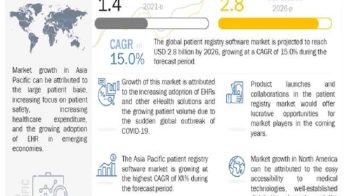
Home healthcare is on the verge of becoming the most preferred option in Europe and rest of the world. The number of elderly is growing in Europe, which has also increased the number of age-related diseases. In order to find a long-term solution to these health issues and other complications, elderly and their relatives prefer relying on the services that are offered to the patients at the comforts of their home. This changing trend paired with continuous technological advancements is drawing the European market to a steady position.
Changing Dimensions of European Home Healthcare
Home is the place of physical and emotional associations for the patients, which serves are the biggest driver for the customers to consider opting for home healthcare services. Increasing technological advancements and innovative yet comforting medical treatments postpone institutionalization and promote healing from various physical, mental and motor diseases. European home healthcare market is largely driven by growing elderly population and their increased health related issues. Increasing demand has also given way to numerous advancements in the technologies offered for the patients.
Segmentation
Improvisations in the technology have led to large segmentation, which is basically dependant on the types of products and demand patterns within various European countries. The products segment has different sub-segments, namely, home care testing (screening and monitoring), home healthcare therapeutic equipment, nutrition, mobile assistance and other digital devices, home telehealth, home healthcare services and therapeutic equipment. Following are the sub-segments in this industry:
- Testing, Screening and Monitoring: Apnea and Sleep Monitors, Blood Glucose meters, BP Monitors, Cholesterol Monitoring Devices, Coagulation Monitors, Colon Cancer Test Kit, Drug & Alcohol Test Kits, ECG/EKG Devices, EEG Devices, Event Monitors, Fetal Heart Rate Monitors, HIV Kits, Holter Monitors, Home Hemoglobin A1c Test Kits, Pregnancy BP Monitors and Ovulation and Pregnancy Test.
- Therapeutic Equipment: Dialysis Equipment, Home Respiratory Therapy Equipment, IV Equipment and Insulin Delivery Devices.
- Telehealth: Home Telehealth Services and Hole Telehealth Monitoring
- Fitness: Body Composition Analyzers, Cardiovascular Exercise Equipment, Heart Rate Monitors.
- Nutrition: Enternal Nutrition and Parenteral Nutrition
- Mobility Assistance: Walking Assistance Devices, Wheelchairs and other related devices.
Forecasting
According to the reports from 2012, European home healthcare market is poised at an estimated $40 billion. These figures are expected to change to around $57 billion by the end of 2017. This remarkable progress tells the story of the growing trend of relying on these services across different European countries. Increasing costs of institutionalized healthcare has made the consumers to shift focus from hospitals and nursing homes to home based services. Within the popular markets including France, Germany, Italy, United Kingdom, Spain, Russia and rest of Europe, Germany is expected to lead the industry within the next four to five years.


